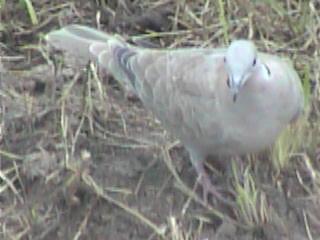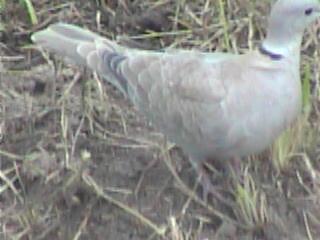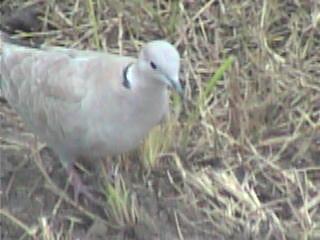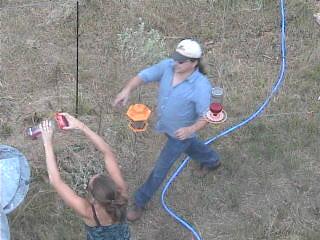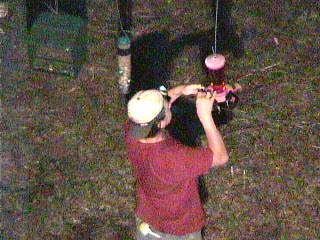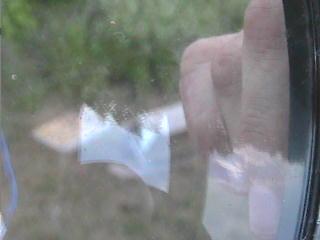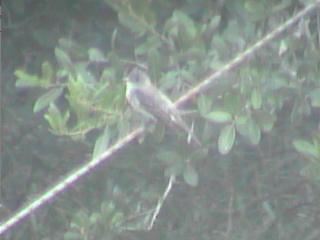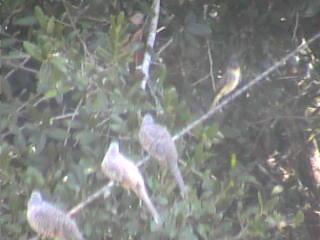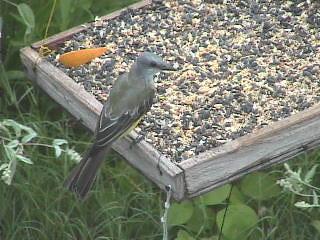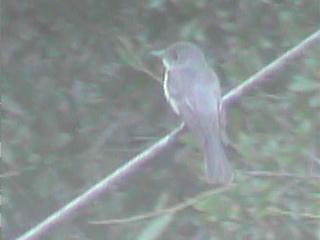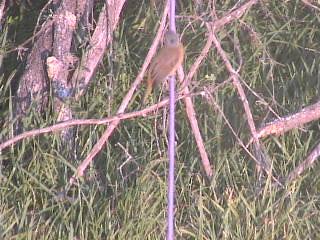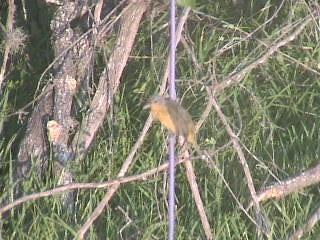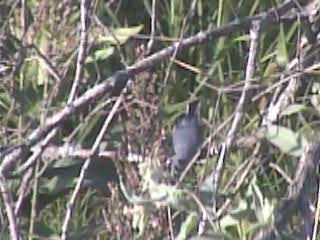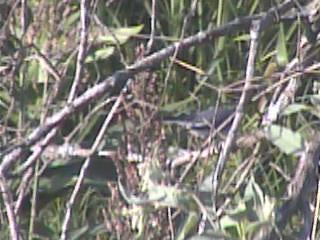Kay Loughman (user loughman1 in CONE) has been doing some really great work lately posing questions to various experts (as her post on the banded Buff-bellied Hummingbird shows). She and I recently put together a list of questions for the people running the show at CONE Welder, and we’ve now received answers that I want to share with you all. (Dr. Selma Glasscock at Welder indicated that she was going to be out of the office until the second half of August, but indicated she would be happy to forward some responses as well when she gets back.)
Dr. Glasscock (and others),
You had previously indicated it would be okay for users of the CONE Welder system to periodically forward you a list of questions and suggestions we had about the system. Attached is a summary of some of the questions users have submitted lately. Any responses you can pass our way would be great; I’ll post them on the blog I maintain.
Thanks.
John Callender (aka “elanus”)
jbc@jbcsystems.com
WELDER
1. Do you have a checklist of Welder’s non-bird wildlife that you could forward to us? Many of us are interested in wildlife beyond birds. A complete list would help us to know more about the area. And in our lax time, we could speculate about the identities of generic frogs, snakes, etc. (loughman1)
John Rappole writes: Selma can correct me if I’m wrong, but I don’t believe that there is a checklist on non-bird wildlife.
2. Beyond the information in the Welder bird checklist regarding the abundance of different species in each seasons, do you have any information you can forward us about what bird species we can expect to start seeing migrating through, and when we might see them? (loughman1)
John Rappole writes: That is a book-length request. Over 300 species of migrants occur in the Texas Coastal Bend region, of which Welder is a part. Over 200 of them have been recorded at Welder. The best source for detailed information on the birds would be a copy of Rappole and Blacklock, 1985, “Birds of the Texas Coastal Bend”, Texas A&M University Press, College Station, Texas or Rappole and Blacklock, 1994, “Birds of Texas”, Texas A&M University Press.
3. The Welder checklist shows Mourning Dove as Common all year. In California they frequent seed feeders, so we’d expect to see them regularly in our area at Welder. But we’ve seen hardly any. Are they elsewhere at the refuge, or simply not as common as we might expect? (loughman1)
John Rappole writes: Mourning Doves are common at Welder all year, as are many other seed-eating species that are not visible regularly at the feeders. Why each of these is or is not at the feeders at any given moment is a study in itself.
4. Do you have any information you can forward us about what bird species have been banded with what colors at the refuge? It is often difficult to determine the band colors. Other than indicating “Banded” in the comments accompanying an image, is there anything else we could do to help identify banded birds? (birdbrain)
John Rappole writes: The only birds that I have banded to date are six Green Jays and a few Inca Doves. Selma and her assistant have banded others, but not in the vicinity of the feeders – and therefore very unlikely to be seen there.
5. Would it be possible for us to know specifically where at Welder the camera is located? We’d like to know more about the habitat beyond the camera’s field of view.
John Rappole writes: The camera is located about 100 meters WNW of the headquarters building, which should be readily visible on Google Earth. The habitat is live oak-mesquite chaparral with some elements of riparian forest. An ox bow lake (Encino Lake) of the Aransas River is about 400 meters north of the site, and the river itself another 500-600 meters beyond that.
6. We very much appreciate the efforts that have been made to immobilize the feeders to minimize movements in the wind. It definitely helps. Even better would be an arrangement of _three_ guy wires running down from each feeder, arranged so that the three wires are in separate planes. By having two guy wires running down from the feeder, diverging to different points on one horizontal wire, and then having a third wire running down from the feeder to a different horizontal wire off to one side, and tensioning all of the wires, you could create a rigid pyramid configuration that would keep the feeder motionless even on windy days. That would be very helpful for aiming and focusing the camera for close-up shots.
John Rappole writes: We have had many suggestions concerning how to improve the feeding site, all of which cost money and time that we do not have a lot of at presesnt. If this project gets solid funding, we will consider what measures need to be taken to best achieve the goals of the research.
WELDER and CONE
7. Would it be possible to add Black-crested Titmouse to the CONE drop-down menu? Although once a subspecies of Tufted Titmouse, Black-crested has been a separate species for some time now, and that is what we believe we are seeing at Welder at least half the time. (loughman1)
John Rappole writes: Although the small hybrid zone for these two forms begins just north of Welder (along the Mission River), and Tufted Titmouse range begins at the San Antonio River, only the Black-crested Titmouse is to be expected at Welder.
Yan Zhang (a member of the CONE team at UC Berkeley) writes: Black-crested Titmouse has been added as a new species.
8. Can the panorama picture be updated to reflect what the site looks like currently? The vegetation and feeder arrangement have changed since the site went live, and it would make navigating the camera easier if the panorama matched the field of view. (loughman1)
Yan Zhang writes: Concerning the panorama, may I request a new panorama image from your side, Dez? Thanks! [Addressed to Prof. Dezhen Song of the Dept. of Computer Science at Texas A&M University, co-developer of CONE.]
CONE
9. We would very much like it if logs of the in-game chat were accessible to users, preferably with date and time stamps. (tinyang)
Yan Zhang writes: We’ll figure out a way to log the chats and make it accessible.
[elanus again] So, there you have it: Some really great responses from some of the people connected with CONE Welder. Thanks to Kay Loughman for putting together the list of questions, and thanks to Dr. Rappole and Yan Zhang for their great answers (and pre-emptive thanks to Dr. Glasscock for her answers when she returns to the refuge).
